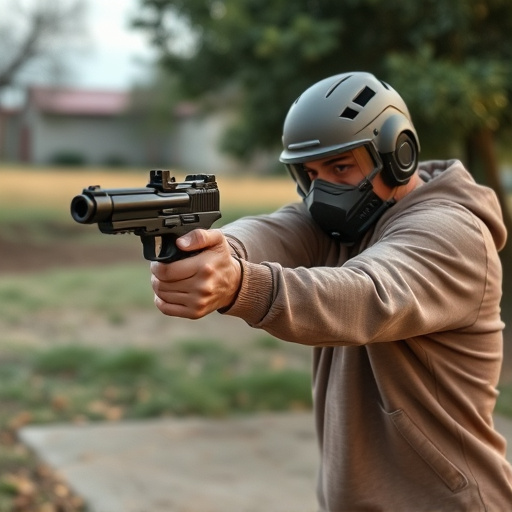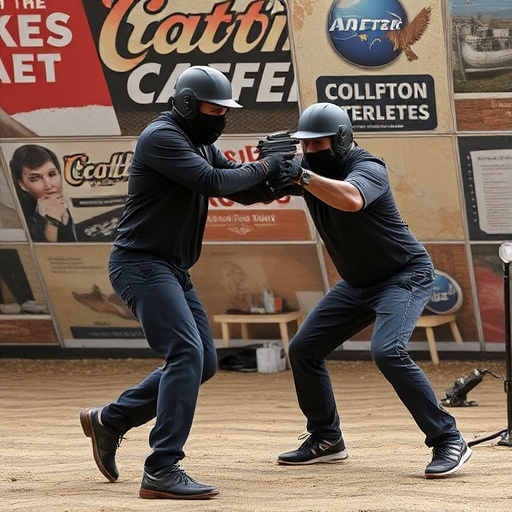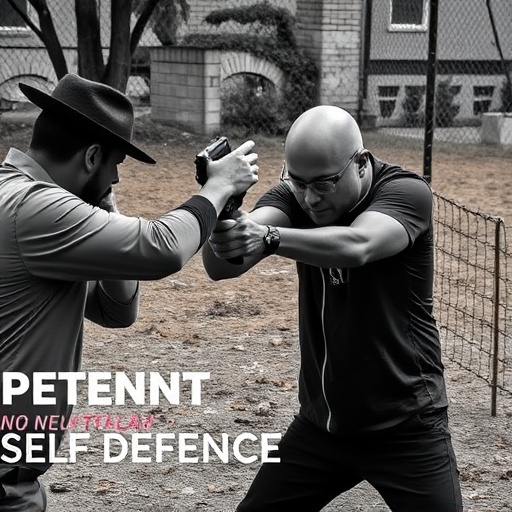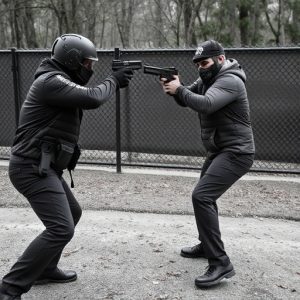Stun Guns: Understanding Projectile vs Contact Types & Buying Tips
When considering what to look for when buying stun guns, understand their types: projectile (stun bu…….
When considering what to look for when buying stun guns, understand their types: projectile (stun bullets/darts) vs contact (stun guns, batons). Key factors include range, power, ease of use and personal preference. Prioritize safety features like locks and auto-shutdown, comply with local laws, and weigh pros & cons based on your needs. Look for robust construction, effective reach, and preferred activation mechanism for swift deployment in critical situations.
In the realm of personal defense, stun weapons have emerged as powerful tools. This article delves into the critical distinction between projectile and contact stun devices, offering a comprehensive guide for buyers. Understanding the unique definitions and differences is key to making an informed decision. We explore essential safety considerations, weigh the pros and cons of each weapon type, and provide insights on design, range, and activation mechanisms—essential factors when buying stun guns.
- Understanding Projectile and Contact Stun Weapons: Definitions and Differences
- Key Considerations When Choosing a Stun Gun: Safety First
- Pros and Cons of Each Weapon Type: Weighing the Options
- What to Look for in Design, Range, and Activation Mechanisms: A Buyer's Guide
Understanding Projectile and Contact Stun Weapons: Definitions and Differences

Stun weapons are a popular choice for self-defense, but understanding their types is crucial when considering what to look for when buying stun guns. Projectile stun weapons, such as stun bullets or darts, operate by firing a small object that makes contact with the target and delivers an electric shock. These devices often use specialized ammunition designed to penetrate skin and activate the stun mechanism, providing a non-lethal but powerful deterrent against potential threats.
In contrast, contact stun weapons, commonly known as stun guns or electroshock weapons, utilize electrical current to disrupt muscle control in the target’s body upon direct physical contact. These devices typically consist of two prongs or probes that make contact with the subject, delivering a high-voltage, low-amperage shock. When choosing between these options, consider factors like range, power output, ease of use, and personal preference to ensure you select the most suitable stun weapon for your needs.
Key Considerations When Choosing a Stun Gun: Safety First

When considering the purchase of a stun gun, prioritizing safety should be your paramount concern. As with any weapon, responsible ownership and handling are essential to prevent accidental discharges that could cause harm. Look for models with robust safety features like trigger locks, auto-shutdown mechanisms, and control buttons designed to prevent unintended activation. Ensure the stun gun is designed for one-handed use, allowing you to keep your other hand free for balance or self-defense.
Additionally, familiarizing yourself with local laws and regulations regarding stun guns is crucial. Different regions have distinct rules about where and how such devices can be carried and used. Understanding these legal parameters will help you make an informed decision when selecting a stun gun that complies with your area’s guidelines, ensuring both safety and legality in your possession and use of the device.
Pros and Cons of Each Weapon Type: Weighing the Options

When considering a stun weapon, understanding the differences between projectile and contact-based designs is essential for making an informed purchase decision. Projectile stun weapons, such as stun guns or tasers, operate by firing electrical probes or darts at the target, delivering a powerful shock from a distance. Pros include ease of use, as operators don’t need direct contact with the subject, and their ability to disable multiple assailants simultaneously. However, drawbacks may include limited range and the possibility of probe misfire or failure in certain environmental conditions.
Contact stun weapons, including batons or electroshock shields, require physical contact with the target for activation. Advantages lie in their close-quarters effectiveness, allowing for more precise control and the ability to adapt to dynamic situations. They are less susceptible to weather interference and offer a closer level of interaction, which can be crucial in self-defense scenarios. Cons include the need for direct contact and potential user fatigue during prolonged use. For individuals seeking a reliable personal safety tool, what to look for when buying stun guns involves evaluating these pros and cons, considering their specific needs, and understanding local regulations regarding stun weapon possession and use.
What to Look for in Design, Range, and Activation Mechanisms: A Buyer's Guide

When considering a stun weapon, understanding its design, range, and activation mechanisms is key to making an informed purchase. What to look for when buying stun guns involves evaluating several critical factors. First, examine the device’s construction; a robust build ensures durability and reliability in various conditions. Look for high-quality materials that can withstand frequent use and tough environments.
Range is another vital consideration. Stun weapons vary significantly in their effective reach, measured in feet or meters. Longer ranges offer more versatility but require line-of-sight access to the target. Ensure the weapon’s specifications align with your intended usage, whether for personal defense at close quarters or for a bit more distance. Additionally, explore different activation mechanisms—whether it’s a simple press of a trigger, a tactical switch, or a smart sensor—to find one that suits your preferences and ensures swift deployment during critical situations.
When considering the purchase of a stun gun, understanding the distinctions between projectile and contact stun weapons is vital. Each type offers unique advantages and drawbacks, with safety being a primary concern. In terms of what to look for when buying stun guns, buyers should prioritize design features that enhance accuracy and control, consider appropriate range options tailored to their needs, and explore reliable activation mechanisms. By carefully weighing these factors, folks can make an informed decision and choose the best stun gun to foster personal safety and security.


